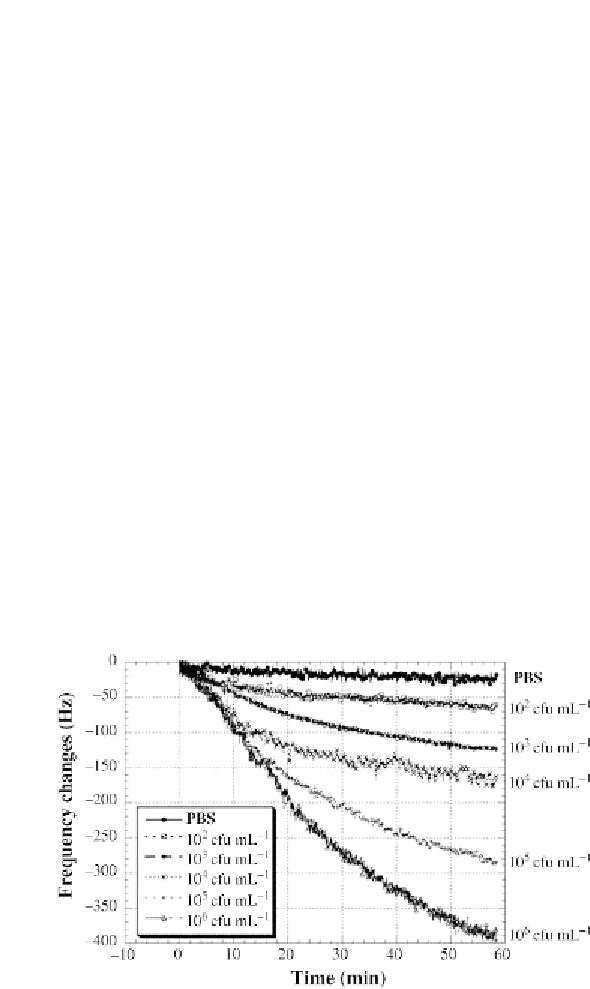Biology Reference
In-Depth Information
Second, in 2009, the sensor surface was functionalized with mannose, and
concanavalin A was employed to mediate the bacteria mannose reaction.
64
This latter system reported detection of as little as 60cellsmL
−1
with a
sample volume of 2.5 mL, incubated for 2.5 h.
Finally, a microcantilever (µC) system operated in bending mode was
capable of detection of 10
6
cfu mL
−1
within 2 h.
65
7.5.2. Salmonella
For this bacterium, all three transduction methods have been trialed. How-
ever, to the best of our knowledge, there is no review paper summarizing
these developments. In terms of optical sensors, FRET-based optical fibers
yielded an LOD of 10
4
cfu mL
−1
within 5 min.
66
An optical grating coupler,
where the use of 3-aminopropyltriethoxysilane was found to be an optimal
surface immobilization strategy for the capture antibody, had an identical
LOD
67
as did a LFA.
68
In this LFA, liposomes were employed for signal
amplification improving on previous work by several orders of magnitude.
Oh et al. reported an LOD for a SAM protein G-based SPR immunosen-
sor in 2004 of 10
2
cfu mL
−1
.
69
Waswa et al. improved this technique in 2006
with a protein A immobilized immunosensor that achieved 23 cfu mL
−1
.
62
As for
E. coli
, amperometric biosensors were developed in the 1990s
45
whereas the use of electrochemical impedance spectroscopy (EIS) is more
recent. Novel statistical signal processing was combined with impedance
Figure 7.16
Real-time response of the magnetoelastic
E. coli
O157:H7 sensor resonance
frequency to
E. coli
O157:H7 concentration, 0-10
6
cells mL
−1
, in pH 10.0 PBS containing
BCIP. Source:
Figure 6 from Ref.
42
. Reprinted with permission. Copyright (2003) American
Chemical Society.

Search WWH ::

Custom Search